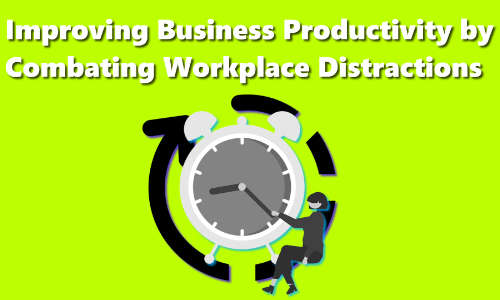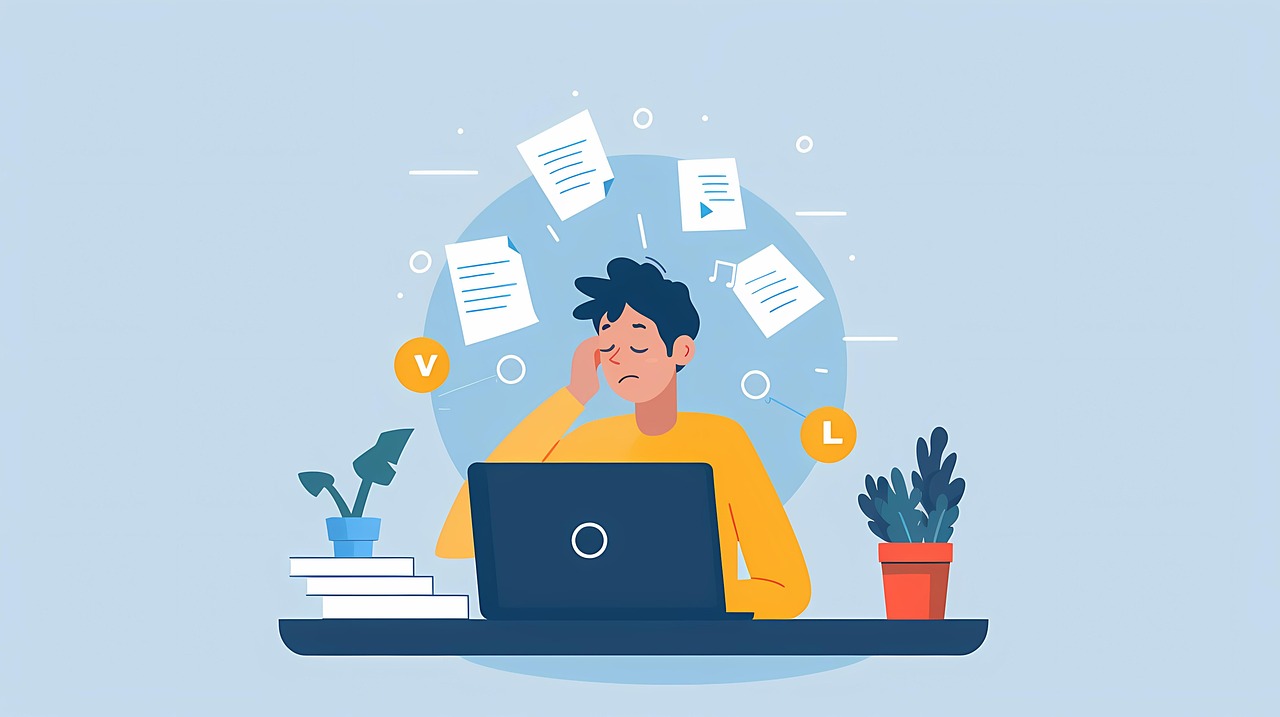


We all have experienced long work days where more than anything we just want to go watch YouTube videos instead of actually doing any work. However, our impulse to forgo work can often lead us to prioritize short term pleasure over long term work goals, creating a big distraction that can hamper our productivity.
Whether you’re working in a busy office or remotely from home, workplace distractions like chatty coworkers, digital notifications, or browsing online content can derail our concentration and eat away at our time. Improving workplace productivity often hinges on minimizing and effectively managing distractions, boundaries and implying good routines as well as habits. Here are some strategies, causes and best practices to help combat distractions and boost your productivity for your business in the workplace.

Keep in mind that distractions in the workplace are not just limited to the abundance of online content, they can be digital, physical, social, or internal. When accounting for distractions in the workplace, it is important to consider each category.
Common workplace distractions include:
· Digital Alerts: Constant notifications from email, messaging apps, or social media.
· Environmental Factors: Uncomfortable seating, poor lighting, or high foot traffic in an open-plan office.
· Internal Distractions: Stress, multitasking, fatigue, or daydreaming.
· Office Interruptions: Chatty colleagues, impromptu meetings, or background noises.

Settings boundaries and structure is important to reduce digital noise which is considered the primary killers of productivity in the workplace. Most people like to tell themselves they are immune to digital noise and will not be bothered by it, but in reality, we can still be affected by it even if its minor. Small disruptions in our work structure such as incoming alerts or notifications are enough to cause work productivity to slow.
Action that can be taken to reduce digital noise:
· Use ‘Do Not Disturb’ or Focus Modes: Many devices and apps offer a “Focus,” “Do Not Disturb,” or “Quiet Hours” mode to silence notifications. Set specific times (two-hour blocks in the morning and afternoon) to work distraction-free.
· Disable Non-Essential Alerts: Turn off pop-up notifications for apps like social media, news feeds, and other non-work-related platforms. Limit essential notifications (email, team chat) to a manageable frequency.
· Batch Process Email and Messages: Schedule set times each day to read and respond to messages rather than constantly reacting to incoming alerts. For instance, check email at 9:00 am, 12:00 pm, and 4:00 pm.

As mentioned before, our impulses can lead us to prioritize short term pleasure over long term work goals. Signs of online distractions are very common in workplace environments even in small instances. Small distractions like watching YouTube videos for five minutes, can become ten minutes, then leading to thirty minutes of time wasted and so on. Structured work intervals can minimize time wasted and keep your mind on task. Techniques like the Pomodoro Technique, time blocking, and task prioritization can help structure your day and reduce the temptation to stop working and control our impulses due to distractions.
Time management techniques to consider:
· Pomodoro Technique: Work in short, focused intervals (30 minutes), followed by a short break (5 minutes). After a few cycles, take a longer break. This helps you stay fresh and driven.
· Time Blocking: Schedule specific time blocks for focused work, meetings, breaks, and administrative tasks. By dedicating blocks of time to each activity, you avoid multitasking and work more efficiently on each task.
· Prioritization Frameworks: Use systems like Eisenhower’s Urgent-Important Matrix or the ABCDE method to prioritize tasks. This ensures you’re focusing on high-impact activities rather than getting distracted by minor tasks.

Overloading yourself with too many tasks and constantly going back and forth between them can be a recipe for disaster. While multitasking is not initially a problem and can be beneficial, it can lead to too much stress if utilized incorrectly and thus foster an unwillingness to work. Context switching can also hamper productivity by making you lose focus on the important tasks.
Steps that can be taken to reduce multitasking and context switching:
· Single-Tasking: Focus on one important task at a time. Finish or reach a milestone before moving to the next task.
· Create Task Bundles: For repetitive tasks like responding to emails, returning phone calls, or updating a project management tool, group them together in one session. Avoid mixing them between other high-focus tasks.
· Set Realistic Goals: Overloading your schedule sets you up for stress and more frequent distractions. Aim for attainable daily and weekly goals within reason.
By proactively establishing good habits and routines, you can take control of your focus, ward off time-wasting distractions, combat impulses to dilly dally, and make steady as well as straight forward progress toward your work goals.